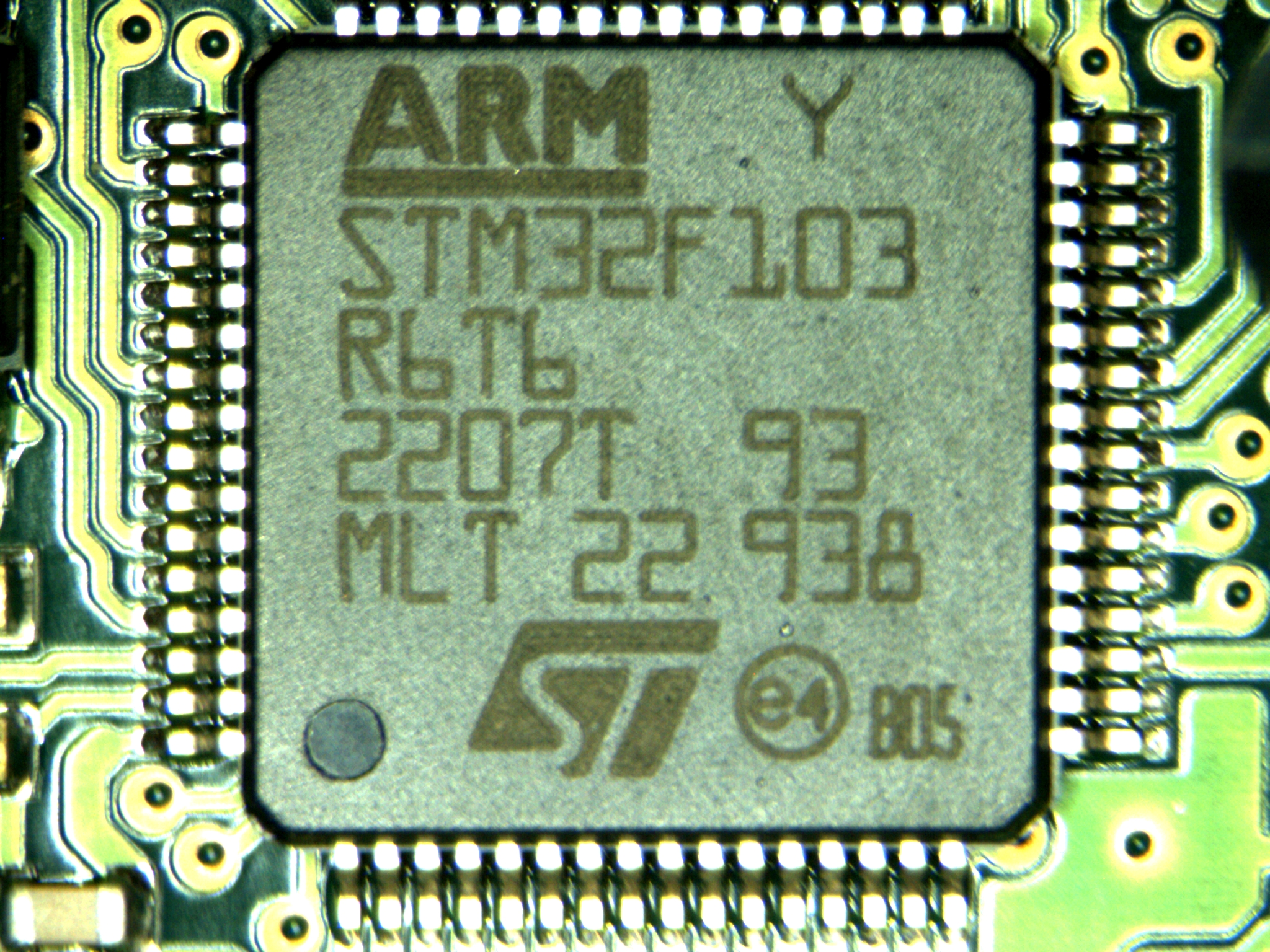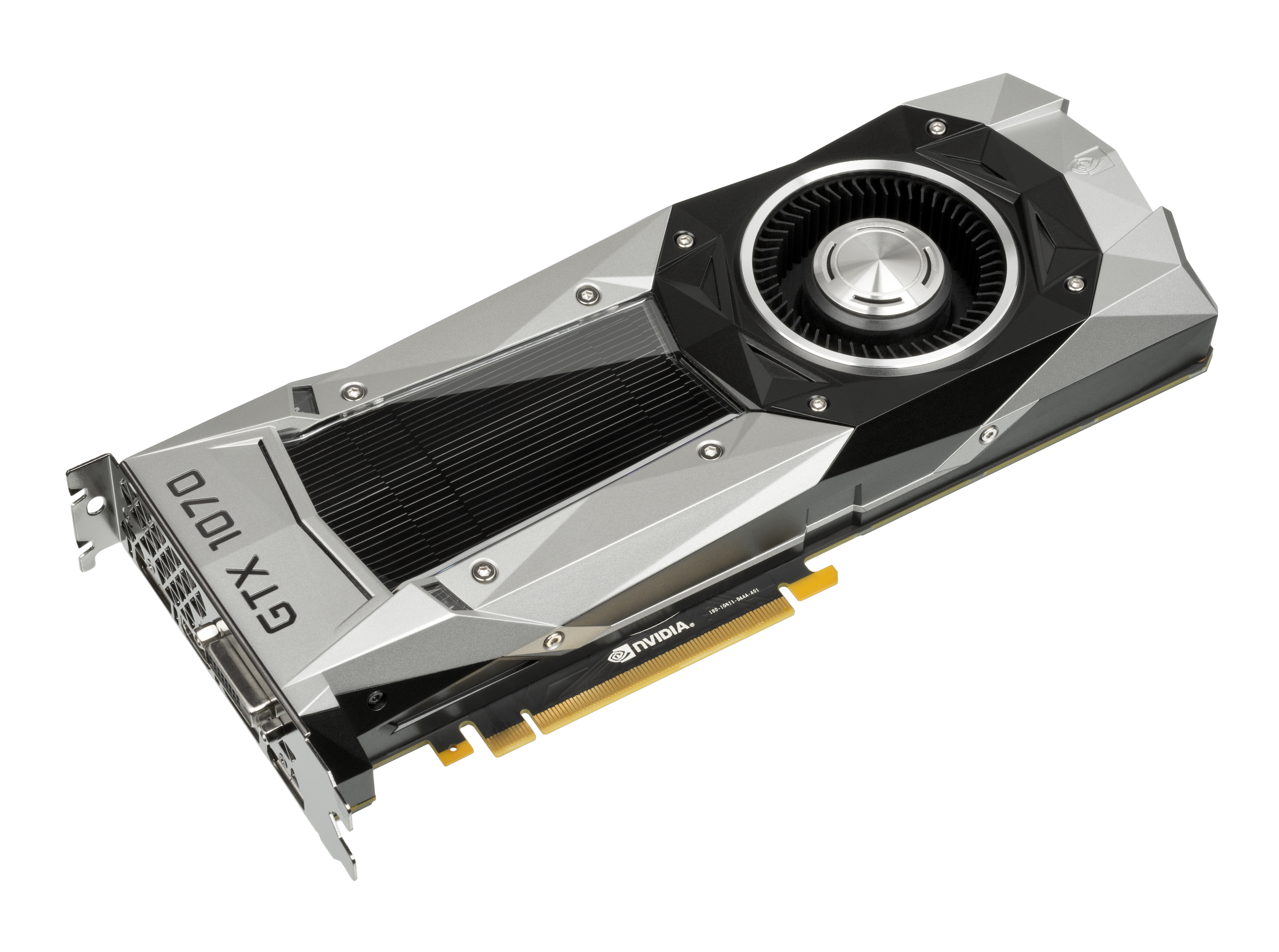|
Tri-gate Transistor
The 22 nm node is the process step following 32 nm in CMOS MOSFET semiconductor device fabrication. The typical half-pitch (i.e., half the distance between identical features in an array) for a memory cell using the process is around 22 nm. It was first demonstrated by semiconductor companies for use in RAM memory in 2008. In 2010, Toshiba began shipping 24 nm flash memory chips, and Samsung Electronics began mass-producing 20 nm flash memory chips. The first consumer-level CPU deliveries using a 22 nm process started in April 2012 with the Intel Ivy Bridge processors. The ITRS 2006 Front End Process Update indicates that equivalent physical oxide thickness will not scale below 0.5 nm (about twice the diameter of a silicon atom), which is the expected value at the 22 nm node. This is an indication that CMOS scaling in this area has reached a wall at this point, possibly disturbing Moore's law. The 20-nanometre node is an intermediate half-no ... [...More Info...] [...Related Items...] OR: [Wikipedia] [Google] [Baidu] |
32 Nm Process
The 32 nm node is the step following the 45 nm process in CMOS ( MOSFET) semiconductor device fabrication. "32- nanometre" refers to the average half-pitch (i.e., half the distance between identical features) of a memory cell at this technology level. Toshiba produced commercial 32GiB NAND flash memory chips with the 32nm process in 2009. Intel and AMD produced commercial microchips using the 32-nanometre process in the early 2010s. IBM and the Common Platform also developed a 32 nm high-κ metal gate process. Intel began selling its first 32 nm processors using the Westmere architecture on 7 January 2010. The 28-nanometre node was an intermediate half-node die shrink based on the 32-nanometre process. The 32 nm process was superseded by commercial 22 nm technology in 2012. [...More Info...] [...Related Items...] OR: [Wikipedia] [Google] [Baidu] |
Die Shrink
The term die shrink (sometimes optical shrink or process shrink) refers to the scaling of metal-oxide-semiconductor (MOS) devices. The act of shrinking a die is to create a somewhat identical circuit using a more advanced fabrication process, usually involving an advance of lithographic nodes. This reduces overall costs for a chip company, as the absence of major architectural changes to the processor lowers research and development costs while at the same time allowing more processor dies to be manufactured on the same piece of silicon wafer, resulting in less cost per product sold. Details Die shrinks are the key to improving price/performance at semiconductor companies such as Samsung, Intel, TSMC, and SK Hynix, and fabless manufacturers such as AMD (including the former ATI), NVIDIA and MediaTek. Examples in the 2000s include the downscaling of the PlayStation 2's Emotion Engine processor from Sony and Toshiba (from 180 nm CMOS in 2000 to 90 nm CMOS in 2003), t ... [...More Info...] [...Related Items...] OR: [Wikipedia] [Google] [Baidu] |
Static Random Access Memory
Static random-access memory (static RAM or SRAM) is a type of random-access memory (RAM) that uses latching circuitry (flip-flop) to store each bit. SRAM is volatile memory; data is lost when power is removed. The term ''static'' differentiates SRAM from DRAM (''dynamic'' random-access memory) — SRAM will hold its data permanently in the presence of power, while data in DRAM decays in seconds and thus must be periodically refreshed. SRAM is faster than DRAM but it is more expensive in terms of silicon area and cost; it is typically used for the cache and internal registers of a CPU while DRAM is used for a computer's main memory. History Semiconductor bipolar SRAM was invented in 1963 by Robert Norman at Fairchild Semiconductor. MOS SRAM was invented in 1964 by John Schmidt at Fairchild Semiconductor. It was a 64-bit MOS p-channel SRAM. The SRAM was the main driver behind any new CMOS-based technology fabrication process since 1959 when CMOS was invented. In 1965 ... [...More Info...] [...Related Items...] OR: [Wikipedia] [Google] [Baidu] |
College Of Nanoscale Science And Engineering
The College of Nanoscale Science and Engineering is the college of nanotechnology at the SUNY Polytechnic Institute campus in Albany, New York. Founded in 2004 and formerly a component of the University at Albany, SUNY, the college underwent rapid expansion in the late-2000s and early-2010s before merging with the SUNY Institute of Technology in 2014. As one of five colleges within SUNY Poly, it was the first college in the United States devoted to nanotechnology. History The College of Nanoscale Science and Engineering was originally established as the School of Nanosciences and Nanoengineering at the University at Albany in 2001. CNSE was accredited as the College of Nanoscale Science and Engineering of the University at Albany in 2004, and in December of that year, awarded its first Ph.D. degrees in nanoscience. In July 2013, SUNY's Board of Trustees approved a memorandum that led to the separation of CNSE from the University at Albany and included the creation of a new degr ... [...More Info...] [...Related Items...] OR: [Wikipedia] [Google] [Baidu] |
STMicroelectronics
STMicroelectronics N.V. commonly referred as ST or STMicro is a Dutch multinational corporation and technology company of French-Italian origin headquartered in Plan-les-Ouates near Geneva, Switzerland and listed on the French stock market. ST is the largest European semiconductor contract manufacturing and design company. The company resulted from the merger of two government-owned semiconductor companies in 1987: Thomson Semiconducteurs of France and SGS Microelettronica of Italy. History ST was formed in 1987 by the merger of two government-owned semiconductor companies: Italian SGS Microelettronica (where SGS stands for ''Società Generale Semiconduttori'', "Semiconductors' General Company"), and French Thomson Semiconducteurs, the semiconductor arm of Thomson. SGS Microelettronica originated in 1972 from a previous merger of two companies: * ATES (Aquila Tubi e Semiconduttori), a vacuum tube and semiconductor maker headquartered in L'Aquila, the regional capital of the r ... [...More Info...] [...Related Items...] OR: [Wikipedia] [Google] [Baidu] |
Freescale
Freescale Semiconductor, Inc. was an American semiconductor manufacturer. It was created by the divestiture of the Semiconductor Products Sector of Motorola in 2004. Freescale focused their integrated circuit products on the automotive, embedded and communications markets. It was bought by a private investor group in 2006, and subsequently merged into NXP Semiconductors in 2015. History As of 2003, Motorola Semiconductor Products Sector earned US$5.0 billion in semiconductor sales in 2002 (out of US$27 billion sales for all of Motorola). Motorola announced that their semiconductor division would be divested on October 6, 2003, to create Freescale. Freescale completed its Initial public offering (IPO) on July 16, 2004, at a price of US$13. In its announcement, it estimated the stock price to be US$17.50- 19.50 but following a cooling of the market towards tech stocks, it lowered its price to US$13. Existing shareholders of Motorola stock received 0.110415 shares of Freescale ... [...More Info...] [...Related Items...] OR: [Wikipedia] [Google] [Baidu] |
Jeffrey Bokor
Jeffrey Bokor is an American electrical engineer. Bokor earned a bachelor's degree in electrical engineering from the Massachusetts Institute of Technology in 1975 and completed a doctorate in the same field at Stanford University in 1980. He then worked for AT&T Bell Laboratories until joining the faculty of the University of California, Berkeley in 1993. At Berkeley, Bokor was the National Semiconductor Distinguished Professor of Engineering, and accepted a later appointment as Paul R. Gray Distinguished Professor of Engineering. Bokor is also affiliated with the Materials Science Division of the Lawrence Berkeley National Laboratory as a senior scientist. Bokor was elected a fellow of the American Physical Society in 1998, which recognized him " r contributions to laser science, including short-wavelength lasers and non-linear optics, development of time-resolved, two-photon photoemission, and contributions to extreme ultraviolet lithography and sub-micron MOSFET device develop ... [...More Info...] [...Related Items...] OR: [Wikipedia] [Google] [Baidu] |
Tsu-Jae King Liu
Tsu-Jae King Liu is an American academic and engineer who serves as the Dean and Roy W. Carlson Professor of Engineering at the UC Berkeley College of Engineering. Liu is an electrical engineer with extensive expertise and achievements in both academia and the semiconductor industry. At UC Berkeley, Liu leads a research team that explores the development of novel semiconductor devices, non-volatile memory devices, and M/NEMS technology for ultra-low power circuits. Her team is a part of the Berkeley Emerging Technologies Research Center and the NSF Center for Energy Efficient Electronics in Science. At UC Berkeley, she is a faculty member of the Kavli Energy NanoScience Institute at Berkeley. She is also an affiliate faculty of the UC Berkeley Applied Science & Technology Graduate Program and the Nanoscale Science and Engineering Graduate Group. Early life and education Liu was born in Ithaca, New York to Taiwanese parents who were graduate students at Cornell University. Her f ... [...More Info...] [...Related Items...] OR: [Wikipedia] [Google] [Baidu] |
Taiwan Semiconductor Manufacturing Company
Taiwan Semiconductor Manufacturing Company Limited (TSMC; also called Taiwan Semiconductor) is a Taiwanese multinational semiconductor contract manufacturing and design company. It is the world's most valuable semiconductor company, the world's largest dedicated independent ( pure-play) semiconductor foundry, and one of Taiwan's largest companies, with its headquarters and main operations located in the Hsinchu Science Park in Hsinchu. It is majority owned by foreign investors. Founded in Taiwan in 1987 by Morris Chang, TSMC was the world's first dedicated semiconductor foundry and has long been the leading company in its field. When Chang retired in 2018, after 31 years of TSMC leadership, Mark Liu became chairman and C. C. Wei became Chief Executive. It has been listed on the Taiwan Stock Exchange (TWSE: 2330) since 1993; in 1997 it became the first Taiwanese company to be listed on the New York Stock Exchange (NYSE: TSM). Since 1994, TSMC has had a compound annual growth rat ... [...More Info...] [...Related Items...] OR: [Wikipedia] [Google] [Baidu] |
Chenming Hu
Chenming Calvin Hu (; born 1947) is a Chinese-American electronic engineer who specializes in microelectronics. He is TSMC Distinguished Professor Emeritus in the electronic engineering and computer science department of the University of California, Berkeley, in the United States. In 2009, the Institute of Electrical and Electronics Engineers described him as a “microelectronics visionary … whose seminal work on metal-oxide semiconductor MOS reliability and device modeling has had enormous impact on the continued scaling of electronic devices”. Education and career Hu completed his bachelor's degree at the National Taiwan University in Taipei in 1968, and completed master's and doctoral degrees at the University of California, Berkeley in 1970 and 1973, respectively. Currently Professor Emeritus, he has been a professor of electrical engineering and computer science at the University of California, Berkeley since 1976. [...More Info...] [...Related Items...] OR: [Wikipedia] [Google] [Baidu] |
Hitachi
() is a Japanese multinational corporation, multinational Conglomerate (company), conglomerate corporation headquartered in Chiyoda, Tokyo, Japan. It is the parent company of the Hitachi Group (''Hitachi Gurūpu'') and had formed part of the Nissan Group, Nissan ''zaibatsu'' and later DKB Group and Fuyo Group of companies before DKB and Fuji Bank (the core Fuyo Group company) merged into the Mizuho Financial Group. As of 2020, Hitachi conducts business ranging from Information technology, IT, including Artificial intelligence, AI, the Internet of things, Internet of Things, and big data, to infrastructure. Hitachi is listed on the Tokyo Stock Exchange and Nagoya Stock Exchange and its Tokyo listing is a constituent of the Nikkei 225 and TOPIX Core30 indices. It is ranked 38th in the 2012 Fortune Global 500 and 129th in the 2012 Forbes Global 2000. History Hitachi was founded in 1910 by electrical engineer Namihei Odaira (1874–1951) in Ibaraki Prefecture. The company's firs ... [...More Info...] [...Related Items...] OR: [Wikipedia] [Google] [Baidu] |
University Of California, Berkeley
The University of California, Berkeley (UC Berkeley, Berkeley, Cal, or California) is a public land-grant research university in Berkeley, California. Established in 1868 as the University of California, it is the state's first land-grant university and the founding campus of the University of California system. Its fourteen colleges and schools offer over 350 degree programs and enroll some 31,800 undergraduate and 13,200 graduate students. Berkeley ranks among the world's top universities. A founding member of the Association of American Universities, Berkeley hosts many leading research institutes dedicated to science, engineering, and mathematics. The university founded and maintains close relationships with three national laboratories at Berkeley, Livermore and Los Alamos, and has played a prominent role in many scientific advances, from the Manhattan Project and the discovery of 16 chemical elements to breakthroughs in computer science and genomics. Berkeley is ... [...More Info...] [...Related Items...] OR: [Wikipedia] [Google] [Baidu] |




